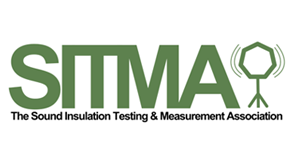Offices Nationwide

Noise Disturbance
Building acoustics can help to mitigate the effects of noise disturbance which can have negative effects on health, well-being and general quality of life.
The Noise Policy Statement for England (NPSE) defines noise pollution as:
- Environmental noise: which includes noise from transportation sources. - Neighbour noise: which includes noise from inside and outside buildings. - Neighbourhood noise: which includes noise arising from industrial and entertainment premises, trade and businesses, construction sites and noise in the street.
This can be an important consideration for the location, design and construction of new developments.



Sound Intensity
Sound intensity is measured in Decibels (dB). This is a logarithmic scale in which an increase of 10 dB gives an apparent doubling of loudness.
Sound pitch is measured in Hertz (Hz), the standard unit for the measurement for frequency. The audible range of sound for humans is typically from 20 Hz to 20,000 Hz, although, through ageing and exposure to loud sounds the upper limit will generally decrease.



Sound Transmissions
Sound transmission paths can be interrupted by sound insulation and by blocking air paths. The sound insulation of a single leaf of a material is governed by its mass, stiffening and damping.
The sound insulation across a good conventional, lightweight, office to office construction is typically in the order of 45 dB Dw. This means that if the sound level in the source room is around 65 dB, (a typical level for speech) the sound level in the adjacent room, the receiver room, will be approximately 20 dB (barely audible). If sound levels are increased in the source room however, to 75 dB (raised voice), sound levels within the adjacent room will also increase to around 30 dB (audible). Sound insulation therefore describes the level of sound lost across a partition and not the level of sound within an adjacent room.
Dw represents the sound insulation between rooms on-site. Rw represents the lab tested sound insulation of an element making up a partition wall/floor type. Standards achieved in labs may not be possible on site because of the quality of workmanship and due to sound ‘flanking’ acoustic elements, that is, travelling around them through an easier path, rather than only directly through them as under lab conditions.
The building regulations part E sets minimum standards for design and construction in relation to the resistance to the passage of sound.



Sound Levels
Decibels (dB) are most commonly used as a measure of sound level, but they are also used in electronics, signals and communications.
Sound is a variation in pressure detectable by the ear, whereas noise is undesired sound, or any sound which causes disturbance or annoyance to the recipient. The unit used to describe sound wave intensity is the bel, named after the inventor Alexander Graham Bell. The human ear is sensitive enough to detect changes of as little as 1/10 of a bel, and so sound intensity levels are described in decibels.
A sound wave’s intensity is the average amount of energy transmitted per unit time through a unit area in a specified direction. The sound intensity level, I, in decibels is 10 times the logarithm of the ratio of the intensity of a sound wave to a reference intensity.


Copyright 2025 E2 Specialist Consultants Limited
Company No. 06728970

































